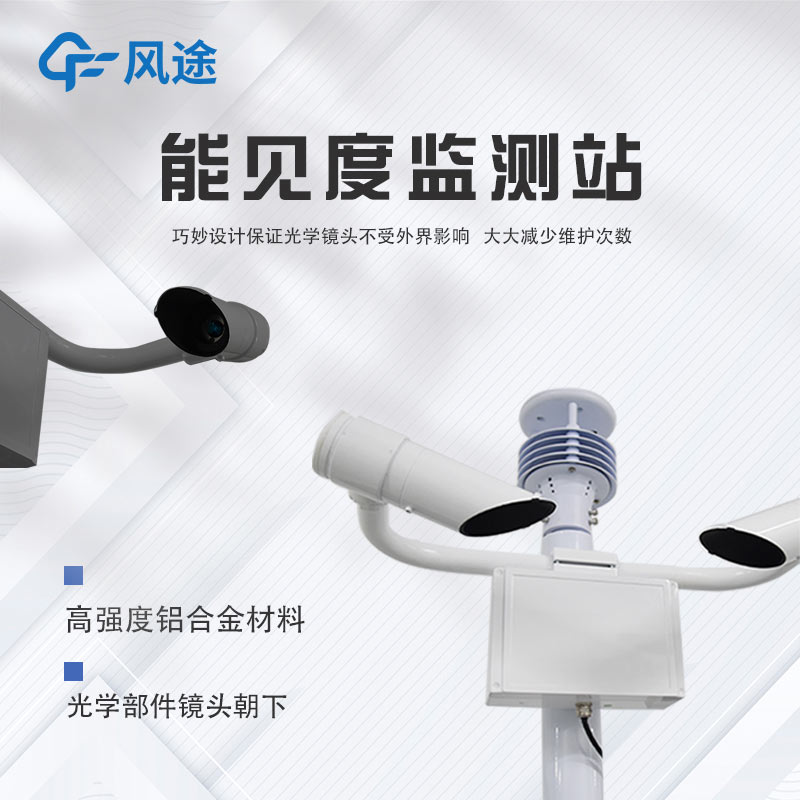Shandong Fengtu IOT Technology Co., Ltd
Sales Manager:Ms. Emily Wang
Cel,Whatsapp,Wechat:+86 15898932201
Email:info@fengtutec.com
Add:No. 155 Optoelectronic Industry Accelerator, Gaoxin District, Weifang, Shandong, China

Sales Manager:Ms. Emily Wang
Cel,Whatsapp,Wechat:+86 15898932201
Email:info@fengtutec.com
Add:No. 155 Optoelectronic Industry Accelerator, Gaoxin District, Weifang, Shandong, China
time:2025-05-26 08:59:53 source:Weather Station viewed:159 time
Adverse weather conditions pose a significant threat to the safe operation of expressways. Severe meteorological phenomena such as waterlogged road surfaces, blizzards with icing, dense fog and patchy fog, and sandstorms not only reduce atmospheric visibility but also alter road conditions. Statistical data shows that expressway traffic accidents caused by dense fog and ice-related skidding account for approximately 25% of the total accident count. The accident rate at night is 1 to 1.5 times higher than during the day, and in adverse weather conditions, the accident rate is as much as 10 times that of normal conditions.
The Visibility Monitoring Station serves as an effective solution to this challenge. When low-visibility weather occurs, the system uses front-end monitoring modules (such as meteorological visibility sensors) to collect real-time data. After analysis, alarm information is promptly uploaded. Duty personnel at the command center can receive alarms via the central platform and mobile phones. Upon confirming the accuracy of the information, they quickly initiate speed limit instructions. Once weather conditions return to normal, the system automatically restores the road speed limit to the original design standard.
The system is composed of three main components: front-end equipment, data transmission, and a remote control center.
Front-end Equipment:
The front-end equipment includes a variety of devices. Core configurations comprise a visibility tester, temperature and humidity sensor, time calibration module, intelligent management host, synchronous speed limit display, fog warning light, and early warning horn. Users can also flexibly select optional components based on actual needs, such as a speed measurement radar, intelligent capture camera, video camera, and evidence display screen.
Data Transmission:
The data transmission component is responsible for real-time reading and processing of sensor data, which is then transmitted to the system platform quickly and stably via wireless communication.
Remote Control Center:
The remote control center offers powerful functionality. The telemetry terminal supports simultaneous data reception by multiple remote monitoring centers. The cloud platform system provides intuitive visualization and in-depth analysis of collected data, enabling the monitoring center to efficiently manage servers, meteorological early warning vehicle control platforms, SMS information distribution, early warning information display screens, and early warning horn data. This ensures timely alarms for abnormal conditions, rapid data processing, and comprehensive, precise control of road monitoring data.

A tunnel is a passage structure built underground or inside a mountain, mainly used to connect two places and cross obstacles. It is commonly found in highway, railway, water conservancy and other projects. It provides a convenient path for transportation and logistics, especially in areas with comp...
The Insect Monitoring Light integrates modern optoelectronic, numerical control, and other technologies in its working principle. It utilizes a specific light source, typically a 20W blacklight tube with a main wavelength of 365nm, which emits light highly attractive to pests, causing them to approa...
Meteorological emergency monitoring is an action that utilizes professional equipment and technologies to collect meteorological data in real-time and dynamically in response to sudden meteorological disasters or abnormal meteorological conditions. Through the rapid monitoring and analysis of meteor...
The Atmospheric Visibility Sensor launched by Fengtu has extensive measurement capabilities. It can select different measurement distances of 10 kilometers, 50 kilometers or 80 kilometers according to user requirements, and also provides customized services.This instrument adopts infrared LED light...